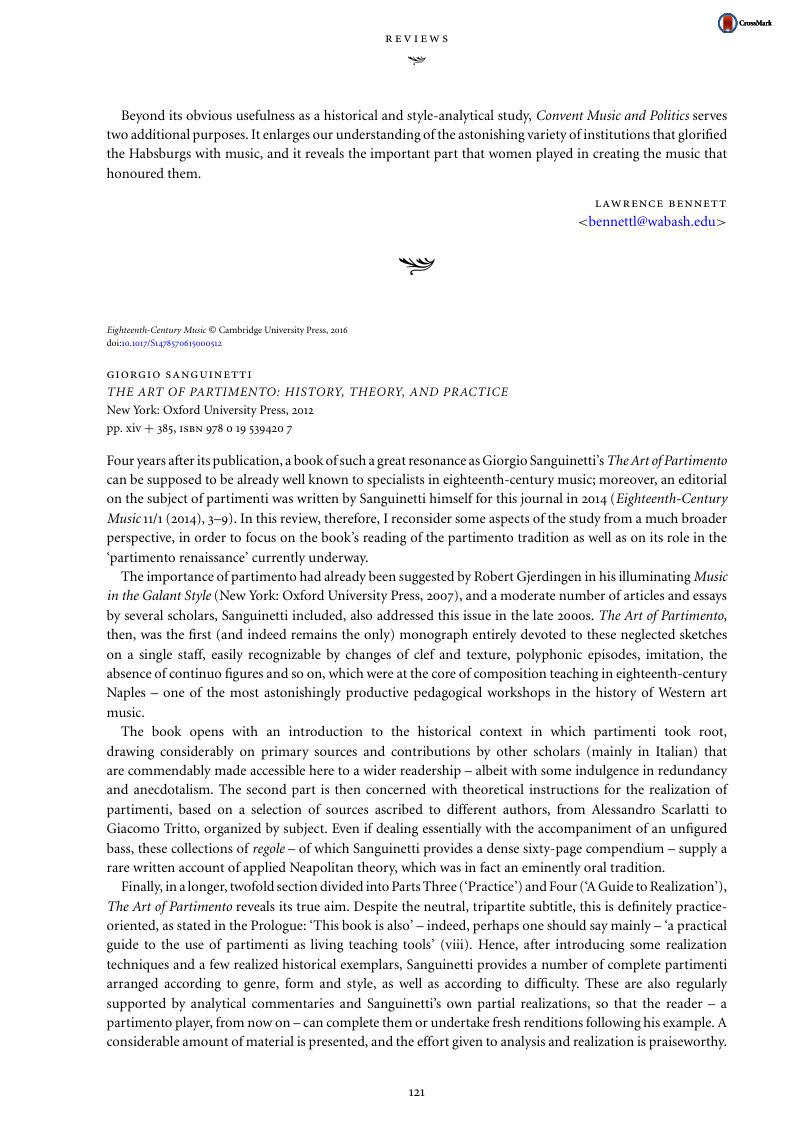No CrossRef data available.
Article contents
GIORGIO SANGUINETTI THE ART OF PARTIMENTO: HISTORY, THEORY, AND PRACTICE New York: Oxford University Press, 2012 pp. xiv + 385, isbn 978 0 19 539420 7
Published online by Cambridge University Press: 11 February 2016
Abstract
An abstract is not available for this content so a preview has been provided. Please use the Get access link above for information on how to access this content.

- Type
- Reviews: Books
- Information
- Copyright
- Copyright © Cambridge University Press, 2016




